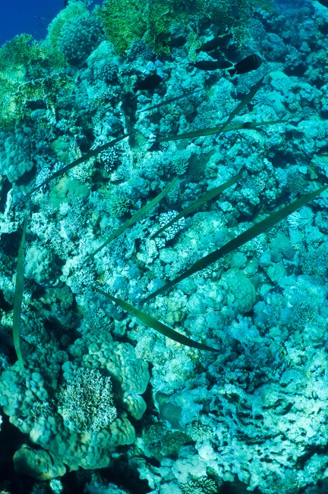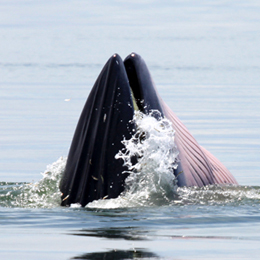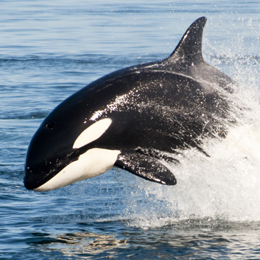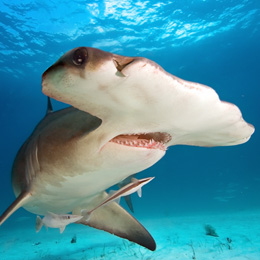Description
The needlefish is also called the Long Tom, due to its thin and long body shape. The name needlefish is given as the elongated mouth resembles a needle. A needlefish has a perfectly streamlined body, which allows the fish to achieve high swimming velocities. They can have a lifespan of up to 8 years and some species are capable of growing more than 1 meter in length. It primarily depends on its sense of vision while hunting.
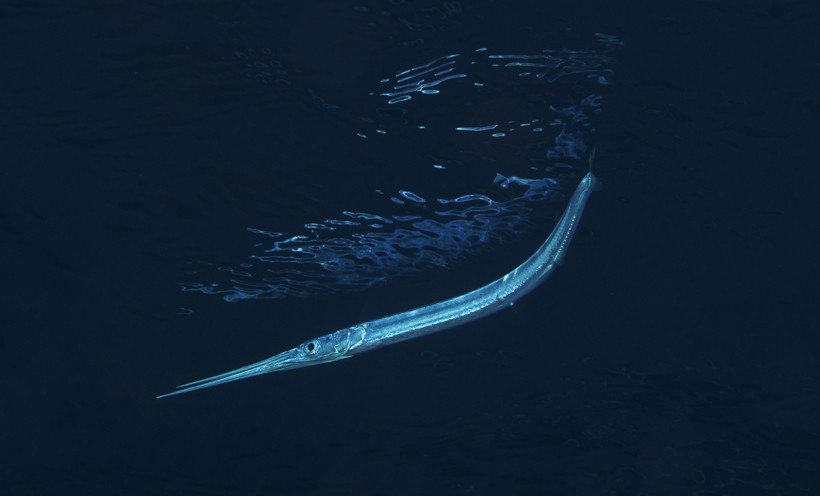
Needlefish in Red Sea, Egypt
?
Image credits: orlandin/Shutterstock
The elongated needle-like beak is equipped with numerous sharp teeth. The Needlefish family consists of up to 35 different species of fish, found in various freshwater bodies and oceans around the world. The species are divided into 10 different genera for easier classification.
Habitat and Population
Needlefish are a widely distributed family of fish, with species inhabiting various freshwater and marine settings worldwide. They swim close to the surface and hunt on small fish, cephalopods and crustaceans while younger individuals can be seen feeding on plankton. Small schools of needlefish can be seen, even though males tend to defend a small territory around them while feeding. Needlefish are very quick predators; they hunt with an upward swipe of their head to bite the prey with their sharp teeth.
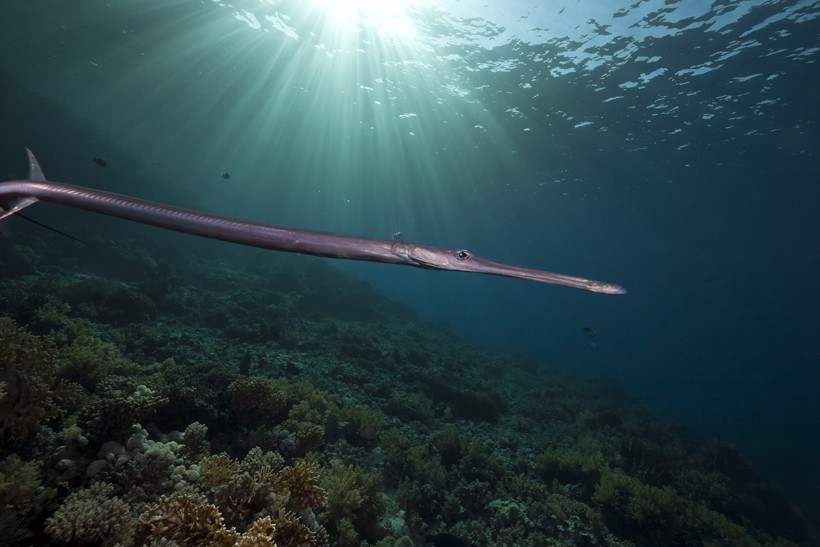
Needlefish coral reef, red sea
?
Image credits: stephan kerkhofs/Shutterstock
Their thin slender body, weak bones and the habit of swimming close to the surface, make them highly vulnerable to predation. Large fish and mammals like sharks and dolphins often find an easy meal in the form of needlefish. Birds like eagles, hawks and ospreys are also hunting on needlefish. Human fishing activities also affects the population of needlefish but on a low level.
The market potential for this fish is low, as their green colored bones and flesh make them look unpleasant for consumption. The needlefish population is flourishing and no species of needlefish is currently under any threat.
Reproduction and Lifecycle
Mating usually occurs in April and May. The male searches for females and competes with other males upon finding mates. The larger male then rides on top of the female while mating. The needlefish is oviparous and lays eggs in shallow waters. Most species of needlefish migrate to shallow waters for spawning. There they produce up to 100 eggs that are attached to each other or to a host plant. The eggs hatch in 10-15 days, giving rise to numerous baby needlefish, which are around half an inch in length.
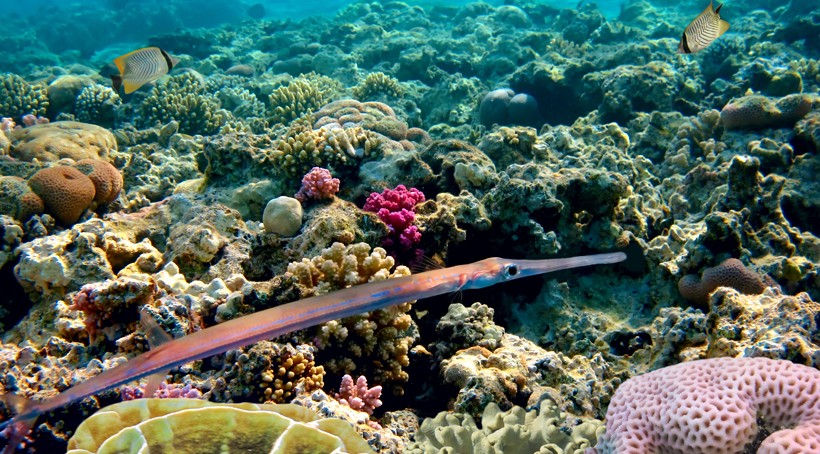
Species of needlefish can be found in coral reefs, open oceans and in shallow- and fresh waters
?
Image credits: Vlad 61/Shutterstock
Before becoming mature adults, the upper jaw of juveniles is quite smaller than the lower one. During this stage, called the half-beak period, this upper jaw is not grown out fully and, therefore, the needlefish cannot hunt. During this time, they primarily feed on plankton and other minute marine organisms. Once the upper jaw is fully developed, the fish shifts its diet and hunts small fish, cephalopods and crustaceans. Although there are up to 35 different species of needlefish in the world, there have been no reports of hybrids or interbreeding.
Genera- Distribution, Characteristics and Behaviour
The Needlefish is one of the most diversely found types of fish known. Some genera of needlefish can be found only in open oceans while others can be observed exclusively in fresh water bodies. The 10 different genera are Ablennes, Belone, Belonion, Petalichthys, Platybelone, Potamorrhaphis, Pseudotylosurus, Strongylura, Tylosurus and Xenentodon.
- Genus Ablennes
This genus consists of only one known species, the flat needlefish (Ablennes hians), which is an ocean dwelling needlefish. The longest one recorded so far is 140 centimetres in length and weighed 4.8 kg! Normally this fish contains between 86 to 93 vertebrae. The flat needlefish prefers tropical seas or seas showing moderate water temperature. They flourish in the Indian Ocean, Atlantic Ocean and Western Pacific Ocean. They can be found in shallow waters near islands and estuaries, due to the rich availability of small fish in such waters. The Ablennes hians is blue and white in colour. The blue colour on top of its body and the white bottom helps the fish to camouflage in the blue ocean waters.
- Genus Belone
The genus Belone consists of two known needlefish species, Belone belone and Belone svetovidovi.
- The species Belone belone is commonly known as the garfish or sea needle. They are found in the Mediterranean Sea, Caribbean Sea, Baltic Sea and the Atlantic Ocean. An adult can be up to 70 cm in length. The dorsal and anal fins of the garfish are closer to the tail, giving the fish better stability and flexibility while swimming.
The garfish are known to follow a migratory pattern. Between May and June migration occurs from the open sea to shallow waters, the mating grounds, where eelgrass is available.
Locals of the Hiiumaa Island in Estonia, celebrate the arrival of garfish in the shallow waters of the Baltic Sea. Every year, on the last Saturday of May, people come together at the Orjaku harbour to celebrate the Garfish Festival. This festival is very popular for its variety of local garfish delicacies and the annual garfish angling competition.
- The Belone svetovidovi or the short-beaked garfish was long misunderstood to be the Belone belone, as both the species share same waters of the eastern Atlantic Ocean. However, this species is shorter, measuring between 30 - 65 cm (12 - 26 inches) while the Belone balone can measure 95 cm (37 inches). Unlike the Belone belone, the short-beaked garfish has a visible black stripe on its sides. This species of garfish is rarely spotted and very little is known about its distribution, population and feeding habits.
- Genus Belonion
The genus Belonion consists of two known species of needlefish; the Belonion apodion and Belonion dibranchodon. These are small needlefish capable of growing for up to 4.8 cm (2 inches) in length. The species of genus Belonion are native only to the tropical fresh waters of South America.
- Genus Petalichthys
The only known species under the genus Petalichthys is the Petalichthys capensis or the Cape needlefish. It is called the Cape needlefish because it is native only to marine waters near the coast of South Africa. The species, living in large schools, is distributed across the Southeast Atlantic Ocean and the Western Indian Ocean. The Cape needlefish grows for up to 30-40 centimetres in length and is, with its silver blueish body, in appearance quite similar to other needlefish species.
- Genus Platybelone
The genus Platybelone consists of only one species of needlefish, known as Platybelone argalus or the Keeltail needlefish. It gets its name due to the unique flat keel like structures on each side of its tail. The Keeltails can grow up to 40-50 cm in length and are quite similar to the North American freshwater gars of the family Lepisosteidae. The Keeltail needlefish is one of the most widely distributed species of needlefish found in the world. They inhabit not only the marine waters of western Atlantic Ocean, Indian Ocean and the Pacific Ocean, but can also be found in the Red sea and the Persian Gulf. They are divided into 7 recognised subspecies distributed in different areas:
- P. argalus annobonensis (west coast of Africa, close to the Gulf of Guinea)
- P. argalus argalus (east coasts of South, Central and North America)
- P. argalus lovii (Cape Verde (west coast of Africa))
- P. argalus platura (Red Sea, Gulf of Aden, Persian Gulf)
- P. argalus platyura (Indian Ocean, Western North Pacific Ocean)
- P. argalus pterura (east coast of Central America)
- P. argalus trachura (Atlantic Ocean, around Saint Helena).
- Genus Potamorrhaphis
Four recognised species of needlefish fall under the genus Potamorrhaphis; they are named as Potamorrhaphis eigenmanni, Potamorrhaphis guianensis, Potamorrhaphis labiatus and Potamorrhaphis petersi. These are small sized needlefish species of up 30 cm in length. They prefer tropical marine waters of South America. Some of the species also inhabit freshwater bodies and river basins in the Amazon rainforest.
- Genus Pseudotylosurus
This genus consists of two recognised species known as Pseudotylosurus angusticeps and Pseudotylosurus microps. They are found along the coast of the South American Continent. Both species are quite similar to other South American species of needlefish.
This genus consists of only one known species, the flat needlefish (Ablennes hians), which is an ocean dwelling needlefish. The longest one recorded so far is 140 centimetres in length and weighed 4.8 kg! Normally this fish contains between 86 to 93 vertebrae. The flat needlefish prefers tropical seas or seas showing moderate water temperature. They flourish in the Indian Ocean, Atlantic Ocean and Western Pacific Ocean. They can be found in shallow waters near islands and estuaries, due to the rich availability of small fish in such waters. The Ablennes hians is blue and white in colour. The blue colour on top of its body and the white bottom helps the fish to camouflage in the blue ocean waters.
The genus Belone consists of two known needlefish species, Belone belone and Belone svetovidovi.
- The species Belone belone is commonly known as the garfish or sea needle. They are found in the Mediterranean Sea, Caribbean Sea, Baltic Sea and the Atlantic Ocean. An adult can be up to 70 cm in length. The dorsal and anal fins of the garfish are closer to the tail, giving the fish better stability and flexibility while swimming.
The garfish are known to follow a migratory pattern. Between May and June migration occurs from the open sea to shallow waters, the mating grounds, where eelgrass is available.
Locals of the Hiiumaa Island in Estonia, celebrate the arrival of garfish in the shallow waters of the Baltic Sea. Every year, on the last Saturday of May, people come together at the Orjaku harbour to celebrate the Garfish Festival. This festival is very popular for its variety of local garfish delicacies and the annual garfish angling competition. - The Belone svetovidovi or the short-beaked garfish was long misunderstood to be the Belone belone, as both the species share same waters of the eastern Atlantic Ocean. However, this species is shorter, measuring between 30 - 65 cm (12 - 26 inches) while the Belone balone can measure 95 cm (37 inches). Unlike the Belone belone, the short-beaked garfish has a visible black stripe on its sides. This species of garfish is rarely spotted and very little is known about its distribution, population and feeding habits.
The genus Belonion consists of two known species of needlefish; the Belonion apodion and Belonion dibranchodon. These are small needlefish capable of growing for up to 4.8 cm (2 inches) in length. The species of genus Belonion are native only to the tropical fresh waters of South America.
The only known species under the genus Petalichthys is the Petalichthys capensis or the Cape needlefish. It is called the Cape needlefish because it is native only to marine waters near the coast of South Africa. The species, living in large schools, is distributed across the Southeast Atlantic Ocean and the Western Indian Ocean. The Cape needlefish grows for up to 30-40 centimetres in length and is, with its silver blueish body, in appearance quite similar to other needlefish species.
The genus Platybelone consists of only one species of needlefish, known as Platybelone argalus or the Keeltail needlefish. It gets its name due to the unique flat keel like structures on each side of its tail. The Keeltails can grow up to 40-50 cm in length and are quite similar to the North American freshwater gars of the family Lepisosteidae. The Keeltail needlefish is one of the most widely distributed species of needlefish found in the world. They inhabit not only the marine waters of western Atlantic Ocean, Indian Ocean and the Pacific Ocean, but can also be found in the Red sea and the Persian Gulf. They are divided into 7 recognised subspecies distributed in different areas:
- P. argalus annobonensis (west coast of Africa, close to the Gulf of Guinea)
- P. argalus argalus (east coasts of South, Central and North America)
- P. argalus lovii (Cape Verde (west coast of Africa))
- P. argalus platura (Red Sea, Gulf of Aden, Persian Gulf)
- P. argalus platyura (Indian Ocean, Western North Pacific Ocean)
- P. argalus pterura (east coast of Central America)
- P. argalus trachura (Atlantic Ocean, around Saint Helena).
Four recognised species of needlefish fall under the genus Potamorrhaphis; they are named as Potamorrhaphis eigenmanni, Potamorrhaphis guianensis, Potamorrhaphis labiatus and Potamorrhaphis petersi. These are small sized needlefish species of up 30 cm in length. They prefer tropical marine waters of South America. Some of the species also inhabit freshwater bodies and river basins in the Amazon rainforest.
This genus consists of two recognised species known as Pseudotylosurus angusticeps and Pseudotylosurus microps. They are found along the coast of the South American Continent. Both species are quite similar to other South American species of needlefish.
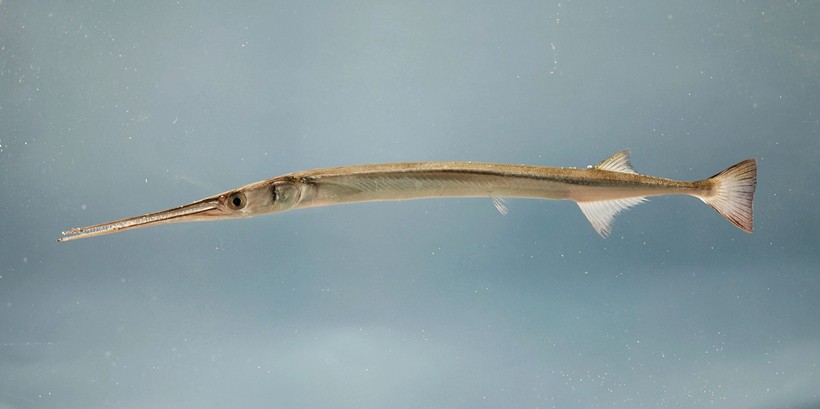
Atlantic needlefish (Strongylura marina), Gulf of Mexico.
?
Image credits: Public Domain
This genus of needlefish consists of 14 recognised needlefish species. These species are:
- Strongylura anastomella
- Strongylura exilis
- Strongylura fluviatilis
- Strongylura hubbsi
- Strongylura incisa
- Strongylura krefftii
- Strongylura leiura
- Strongylura marina
- Strongylura notata
- S. notata notata
- S. notata forsythia
- Strongylura scapularis
- Strongylura senegalensis
- Strongylura strongylura
- Strongylura timucu
- Strongylura urvillii
The genus Tylosurus consists of six recognised species known as Tylosurus acus, Tylosurus choram, Tylosurus crocodilus, Tylosurus gavialoides, Tylosurus pacificus and Tylosurus punctulatus.
- The Tylosurus acus consists of four subspecies namely T. a. Acus, T. a. Imperialis, T. a. Melanotus and T. a. Rafale. All four subspecies of Tylosurus acus are large needlefish, capable of growing for more than a meter in length.
- Tylosurus a. Acus is found in the western Atlantic Ocean and inhabits offshore and coastal waters, while the T. a. Imperialis is distributed across the eastern Atlantic Ocean.
- The subspecies T. a. Melanotus has longer jaws and an unique black keel on the caudal peduncle. They are found in the Indo-Pacific Ocean and eastern central Pacific Ocean. T. a. Melanotus is commonly known as the keel-jawed Long Tom.
- The T. a. Rafale is also known as the Atlantic agujon needlefish. It can be found flourishing in the Eastern Atlantic Ocean.
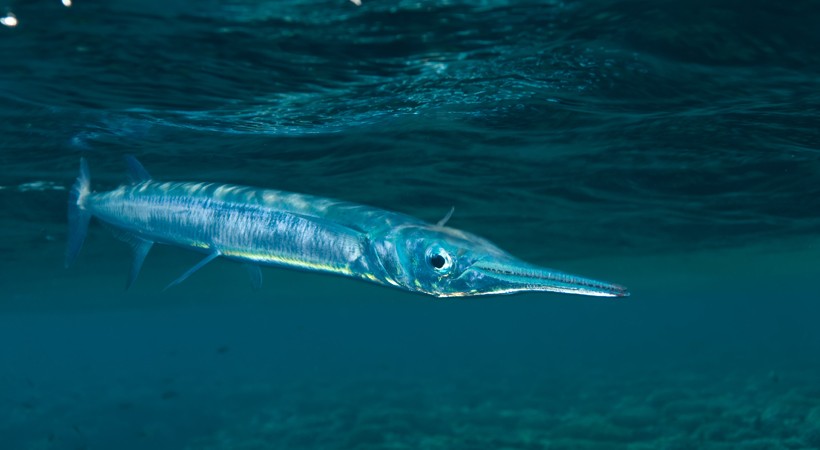
Tylosurus choram, or Red Sea houndfish, swimming close to the surface
?
Image credits: Mark Doherty/Shutterstock
- The Tylosurus choram is also widely popular as the Red Sea houndfish. They are found in the red sea and can form small schools in order to hunt more efficiently.
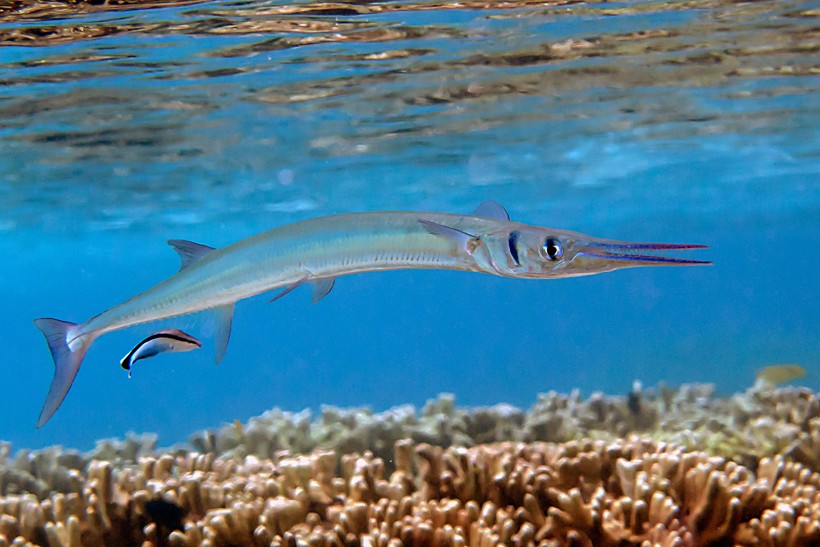
Tylosurus crocodilus or Houndfish, bunaken island, sulawesi, indonesia
?
Image credits: Hans Gert Broeder/Shutterstock
- The Tylosurus crocodilus is also known as Houndfish. This species is easily identifiable due to its cylindrical body and a short beak, compared to other species of the needlefish. Two subspecies of Tylosurus crocodilus have been recognised; they are T. c. crocodilus and T. c. fodiator. The subspecies T. c. crocodilus is found in the marine waters of the Indian and Pacific Ocean, while the T. c. fodiator is found only in the eastern Pacific Ocean. The longest recorded T. crocodilus was 150 centimetres long. These needlefish can jump out of water, directing its needle to a potential threat. Two records of serious injuries to humans have been reported so far.
- The Tylosurus gavialoides is also called the Stout Long Tom and is endemic to Australian marine waters of the Indo-west Pacific Ocean. They are medium-sized needlefish capable of growing 70-80 cm in length. Their body is cylindrical and they have short beak, like the T. crocodilus.
- The Tylosurus pacificus is commonly known as the Pacific agujon needlefish. They can be found only in the Eastern Pacific Ocean, but their population is not under any threat. This sort is one of the most commonly found fish in its range. They are usually found offshore, but can be occasionally found in the coastal regions as well.
- The Tylosurus punctulatus is found only in the Western Central Pacific Ocean, east to the Solomon Islands and north to Philippines. Its average length is 50-60cm. It is also known as the spotted Long Tom, due to the visible orange spots on the sides of its body.
The genus Xenentodon consists of two recognised species namely, Xenentodon cancila and Xenentodon canciloides. Both the species of genus Xenentodon are found in Asia, where they inhabit various freshwater bodies. As these are freshwater fish, they are affected by construction of dams and other human activities in the river. However, the two species are not experiencing any major threat for their survival.
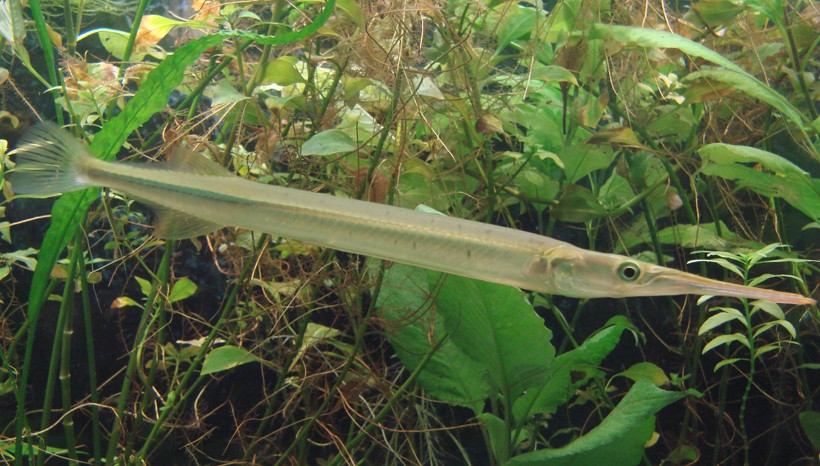
Xenentodon cancila
?
Image credits: Guérin Nicolas/by-sa 3.0, original image
- Xenentodon cancila is found in India, Pakistan, Bangladesh, Nepal, Sri Lanka, Myanmar and Thailand. The species is known to flourish most in the Ganges-Brahmaputra river system of India.
- Xenentodon canciloides, also known as the Indochinese Needlefish is found commonly in rivers and lakes of Malaysia, Thailand, Vietnam, Lao People’s Democratic Republic, Cambodia and Indonesia.
- Xenentodon cancila is found in India, Pakistan, Bangladesh, Nepal, Sri Lanka, Myanmar and Thailand. The species is known to flourish most in the Ganges-Brahmaputra river system of India.
- Xenentodon canciloides, also known as the Indochinese Needlefish is found commonly in rivers and lakes of Malaysia, Thailand, Vietnam, Lao People’s Democratic Republic, Cambodia and Indonesia.
Evolution
Very little is known about the evolutionary history of the needlefish, due to lack of fossil records and research. However, genes from garfish indicate initiation of hands and paws in land animals. This revealed that the needlefish must originate from a very ancient lineage and must be a close relative to the ancestors of land animals.
Funfacts
- Needlefish have no stomach. Instead, their digestive system secretes an enzyme called trypsin, which supports the breaking down of food.
- Most Needlefish species have blue or green colored bones and flesh.
- The Needlefish can reach speeds of 60 km/h and can jump out of the water. They are known to jump over small boats, instead of swimming underneath.
- Needlefish have been reported to be responsible for two deaths so far, but usually, they are not harmful to humans.
